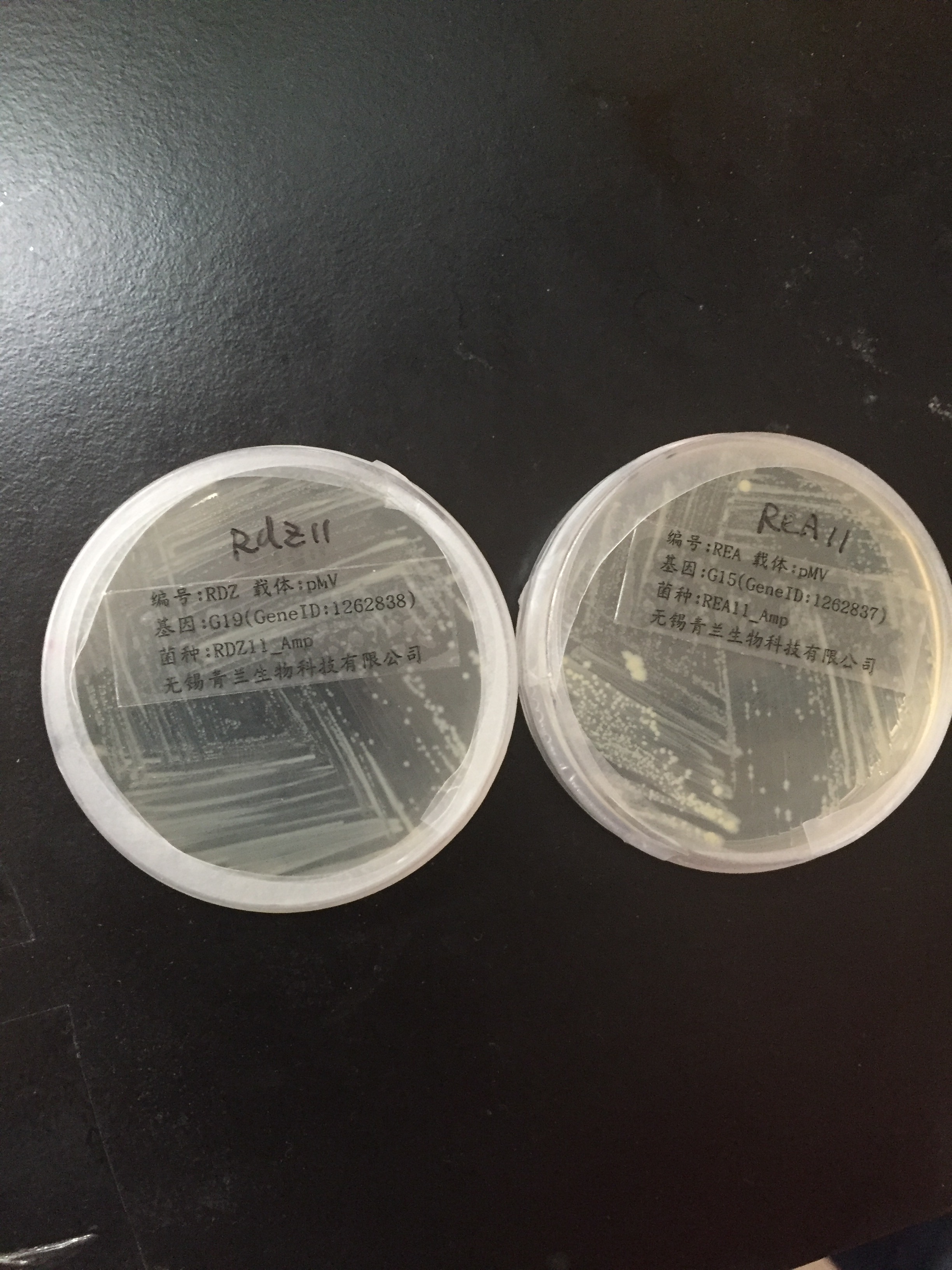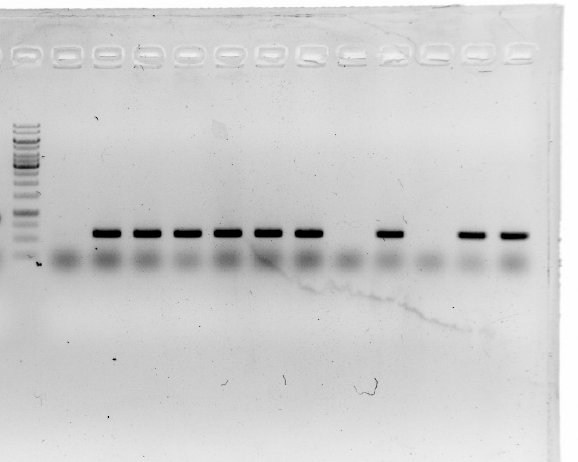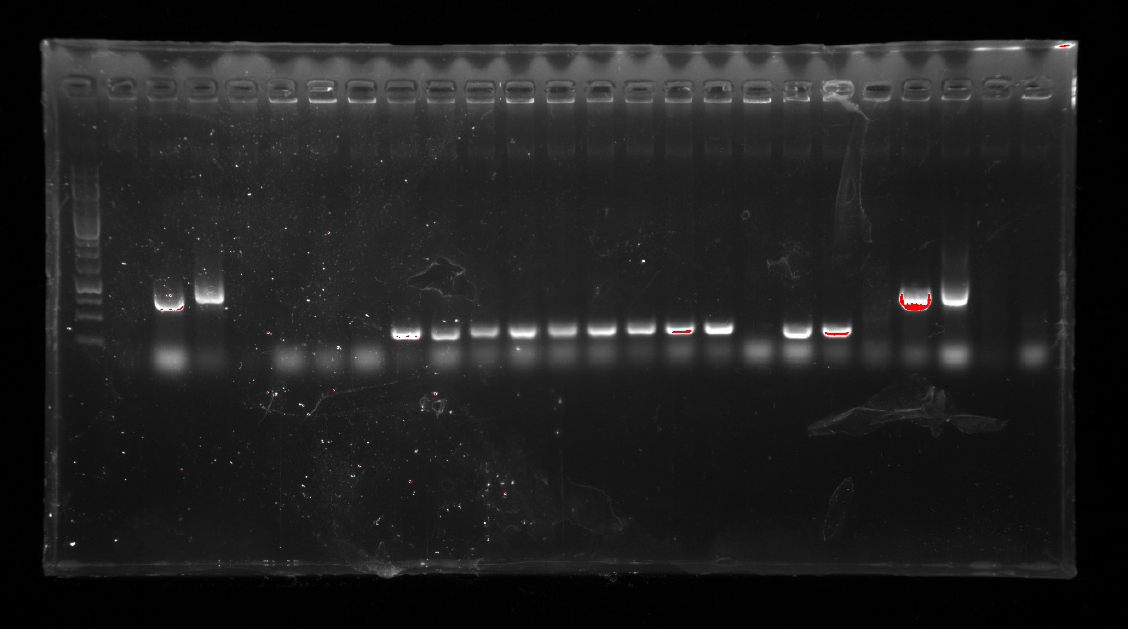Plasmids pT-13-19-15 were handed in for sequencing, which confirmed its correctness.
The sequencing results for both of them were error.
Colonies containing Ni inducible promoter were used to inoculate overnight cultures.
PCR was performed to check if the gene fragments were ligated correctly.
13_ fwd and 15_rev on pT-13-19-15
Gel electrophoresis showed that it failed.
Plasmids pCPC-3031-Ni were isolated using a miniprep kit.
Several PCRs were performed to check if the gene fragments were ligated correctly.
1.13_fwd and 13_rev on pT-13-19-15
2.19_fwd and 19_rev on pT-13-19-15
3.15_fwd and 15_rev on pT-13-19-15
4.13_fwd and 19_rev on pT-13-19-15
5.19_fwd and 15_rev on pT-13-19-15
6.13_ wd and 15_rev on pT-13-19-15
The fourth and sixth ones were not successful.
Repetition: Phosphorylated 13 was ligated into pT-19-15 and transformed into E.coli via heat shock.
Repetition: Several PCRs were performed to check if the gene fragments were ligated correctly.
1.13_fwd and 13_rev on pT-13-19-15
2.13_fwd and 19_rev on pT-13-19-15
The second one was failed.

Medium preparation :BG-11.
19_ fwd and 15_rev were used to amplify 19-15.
Gel electrophoresis showed that amplification of fragments was successfull.
Ligated 13 and 19-15 via overlap PCR.
This PCR worked well and the products were extracted from the gel using a Agarose Gel DNA Extration Kit.
Restriction digest on pCPC-3031-Ni with Sac I.
 The fragment 13-19-15 was ligated onto T vector and transformed into E.coli via heat shock.
The fragment 13-19-15 was ligated onto T vector and transformed into E.coli via heat shock.
 A colony PCR of pT-13-19-15 was performed with 12 colonies.
A colony PCR of pT-13-19-15 was performed with 12 colonies.
Two of these colonies containing pT-13-19-15 were used to inoculate overnight cultures.
13-19-15 gene fragment was phosphorylated.
Phosphorylated 13-19-15 was ligated into pCPC-3031-Ni and transformed into E.coli via heat shock.
Plasmids pT-13-19-15 were isolated using a miniprep kit.
A colony PCR of pCPC-3031-Ni-13-19-15 was performed with 12 colonies.
Three colonies were proved to be true. And two of them were used to inoculate overnight cultures.

Plasmids pT-13-19-15 were handed in for sequencing, which confirmed its correctness.
The sequencing results for them were correct.










